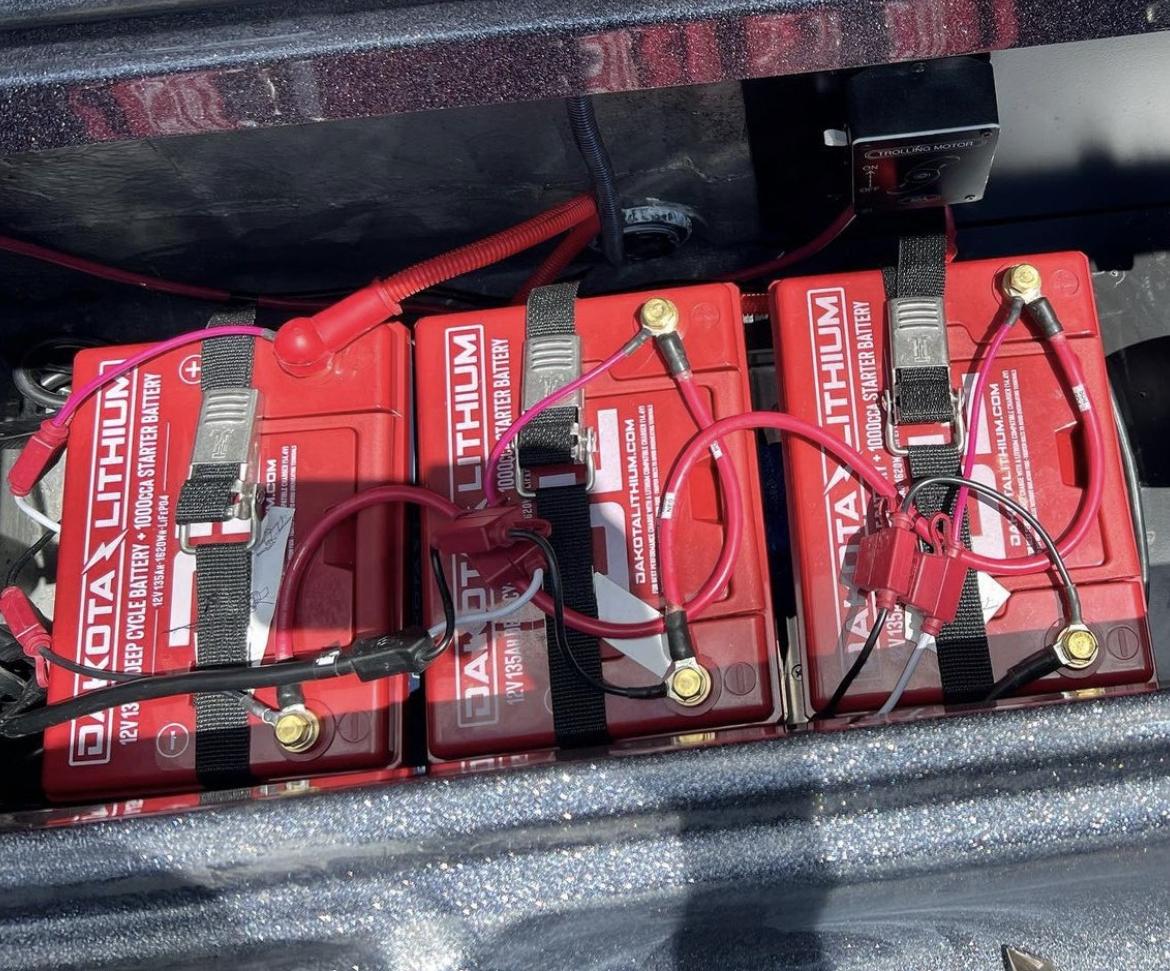The thrill of a tug on the line, the serenity of a quiet morning on the water – these are the experiences that make fishing an unforgettable pastime. But behind every successful fishing trip lies an unsung hero: the trolling motor battery. Often referred to as the "silent partner," a reliable trolling motor battery is crucial for navigating, positioning, and ultimately, catching that trophy fish.
In this blog, we'll delve into the world of trolling motor batteries, exploring the different types available, their key features, and how to choose the one that best suits your fishing needs. We'll also explore some of the top brands in the market, including Dakota Lithium Batteries, known for their innovative lithium offerings.
Understanding Your Battery Needs
Before diving into specific battery types, it's important to understand the electrical demands of your trolling motor. Trolling motors are typically rated in pounds of thrust (lbs.), which indicates their power output. Higher thrust motors require more power, and consequently, a battery with a higher capacity.
There are two key specifications to consider when choosing a trolling motor battery:
Amp Hours (Ah): This rating represents the total amount of current a battery can deliver over a specific time. For trolling applications, a higher Ah rating translates to longer run times on a single charge.
Cranking Amps (CA) or Cold Cranking Amps (CCA): While not as crucial for trolling motors, this rating indicates the battery's ability to deliver a short burst of high current, which can be helpful when starting your boat engine (if your trolling motor battery serves a dual purpose).
The Battery Lineup: Choosing Your Champion
Now that you understand the basics, let's explore the two main types of trolling motor batteries:
Lead-Acid Batteries: These are the most common and affordable option. They come in various sizes, with popular choices including Group 27 and Group 31 battery. Lead-acid batteries are further categorized into flooded lead-acid (wet cell) and sealed maintenance-free (SMF) batteries. Flooded batteries require periodic maintenance (topping off water levels), whereas SMF batteries are maintenance-free but generally have a shorter lifespan.
Lithium Batteries: While more expensive upfront, lithium batteries offer significant advantages. They boast a much longer lifespan (often exceeding twice that of lead-acid batteries), lighter weight (making them ideal for smaller boats), and incredible efficiency, translating to longer run times on a single charge. Among lithium options, Lithium Iron Phosphate (LiFePO4) batteries are a popular choice for trolling motors due to their inherent safety and stability. Brands like Dakota Lithium Batteries are known for their high-quality LiFePO4 offerings.
12v vs. 24v Systems
Trolling motor batteries can be wired in series or parallel to achieve different voltage outputs. Most trolling motors operate on a 12v system, and a single Group 27 or Group 31 battery will suffice. However, for higher thrust motors or those requiring extended run times, a 24v battery system may be preferable. This is achieved by connecting two 12v batteries in series. Here are some factors to consider when choosing between 12v and 24v systems:
Trolling Motor Requirements: Refer to your trolling motor's manual for its recommended voltage.
Boat Electrical System: Ensure your boat's electrical system is compatible with a 24v setup if considering that option.
Battery Compartment Size: 24v systems require additional space to accommodate two batteries.
Maximizing Battery Life
Regardless of the type you choose, proper care and maintenance will extend the life of your trolling motor battery. Here are some key tips:
Proper Charging: Use a charger specifically designed for deep-cycle batteries like trolling motor batteries.
Storage: When not in use, store your battery in a cool, dry place at a partially charged state.
Minimize Deep Discharging: Avoid completely draining your battery, as this can significantly shorten its lifespan.
The Dakota Lithium Difference
If you're looking for the ultimate in performance and longevity, Dakota Lithium Batteries are a top choice. Their LiFePO4 batteries boast impressive features like:
Superior Lifespan: Up to 10x longer lifespan compared to traditional lead-acid batteries.
Lightweight Design: Significantly lighter than lead-acid batteries, enhancing boat handling and performance.
Unmatched Efficiency: Enjoy longer trolling times on a single charge.
Built-in Battery Management System (BMS): Ensures safe and reliable operation.
Conclusion
Your trolling motor battery is an essential investment for any serious angler.By understanding your trolling motor's needs, choosing the right battery type and voltage setup, and practicing proper maintenance, you can ensure your silent partner is always ready to power you to your next fishing success.
